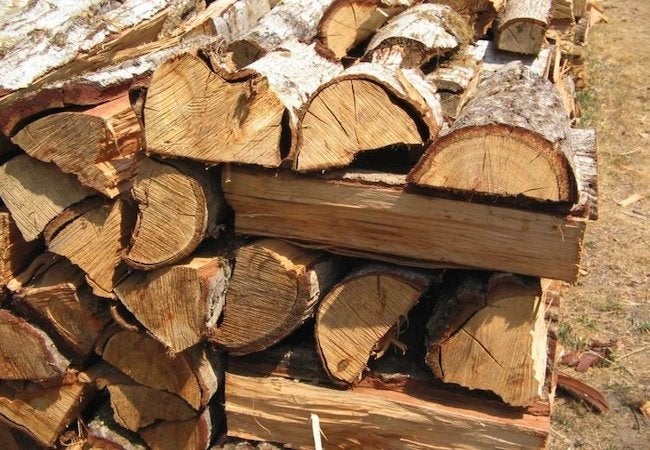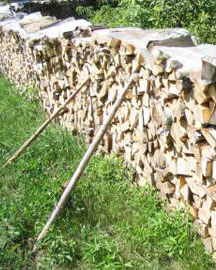| Roofing / Flashings / Chimneys |
|---|
| Install conventional asphalt shingles over existing shingles | $2.00 – $4.00 per sq.ft. |
| Strip and reshingle with conventional asphalt shingles | $2.75– $5.50 per sq.ft. |
| Strip and reshingle with premium quality asphalt shingles | $5.00 – $10.00 per sq .ft. |
| Strip and re-roof with cedar shingles | $9.00 – $18.00 per sq .ft. |
| Strip and replace built-up tar and gravel roof | $10.00 – $20.00 per sq.ft. (min. $1000) |
| Strip and replace single-ply membrane | $10.00 – $20.00 per sq.ft. (min. $1000) |
| Reflash typical skylight or chimney | $500.00 – $1000.00 |
| Rebuild typical chimney above roof line | $25.00 – $50.00 per row of bricks (min. $400) |
| Rebuild typical single flue chimney above roof line | $200.00 – $400.00 per lin.ft. (min. $1000) |
| Exterior |
|---|
| Install galvanized or aluminum gutters and downspouts | $5.00 – $10.00 per lin.ft. (min. $500) |
| Install aluminum soffits and fascia | $8.00 – $16.00 per lin.ft. |
| Install aluminum or vinyl siding | $6.00 – $12.00 per sq.ft. |
| Repoint exterior wall (soft mortar) | $3.00 – 6.00 per sq.ft. (min. $500) |
| Repoint exterior wall (hard mortar) | $5.00 – $10.00 per sq.ft. (min. $500) |
| Parge foundation walls | $3.00 – $6.00 per sq.ft. |
| Dampproof foundation walls and install weeping tile | $150.00 – $300.00 per lin.ft. (min. $3,000) |
| Install a deck | $25.00 – $50.00 per sq.ft. (min. $1000) |
| Resurface existing asphalt driveway | $2.00 – $4.00 per sq.ft. |
| Install interlocking brick driveway | $8.00 – $16.00 per sq.ft. |
| Rebuild exterior basement stairwell | $5000.00 and up |
| Build detached garage | $70.00 – $140.00 per sq.ft. |
| Build retaining wall (wood) | $20.00 – $40.00 per sq.ft. (min. $500) |
| Build retaining wall (concrete) | $30.00 – $60.00 per sq.ft. (min $500) |
| Painting (trim only) | $2,000.00 – $4,000.00 and up |
| Painting (trim and wall surfaces) | $5,000.00 and up |
| Structure |
|---|
| Underpin one corner of house | $5,000.00 and up |
| Underpin or add foundations | $300.00 and up per lin.ft. (min. $3000) |
| Lower basement floor by underpinning and/or bench footings | $150.00 – $300.00 per lin.ft. (min. $5,000) |
| Replace deteriorating sill beam with concrete | $60.00 and up per lin.ft. (min. $2000) |
| Install basement support post with proper foundation | $800.00 – $1600.00 |
| Perform chemical treatment for termites | $2000.00 and up |
| Repair minor crack in poured concrete foundation | $400.00 – $800.00 |
| Electrical |
|---|
| Upgrade electrical service to 100 amps (including new panel) | $1200.00 – $3,000.00 |
| Upgrade electrical service to 100 amps (if suitably sized panel already exists) | $800.00 – $1600.00 |
| Upgrade electrical service to 200 amps | $1700.00 – $3,500.00 |
| Install new circuit breaker panel | $700.00 – $1400.00 |
| Replace circuit breaker (20 amp or less) | $100.00 – $200.00 |
| Add 120 volt circuit (microwave, freezer, etc.) | $150.00 – $300.00 |
| Add 240 volt circuit (dryer, stove, etc.) | $300.00 – $600.00 |
| Add conventional receptacle | $200.00 – $400.00 |
| Replace conventional receptacle with ground fault circuit receptacle | $70.00 -$140.00 |
| Replace conventional receptacle with aluminum compatible type (CO/ALR)(assuming several are required) | $60.00 – $120.00 ea. |
| Upgrade entire house with aluminum compatible receptacles, connectors, etc. | $1000.00 – $2000.00 |
| Rewire electrical outlet with reversed polarity (assuming electrician already there) | $5.00 – $10.00 ea. |
| Replace knob & tube wiring with conventional wiring (per room) | $1000.00 – $2000.00 |
| Heating |
|---|
| Install mid-efficiency forced-air furnace | $2500.00 – $5,000.00 |
| Install high-efficiency forced-air furnace | $3500.00 – $7,000.00 |
| Install humidifier | $300.00 – $600.00 |
| Install electronic air filter | $800.00 – $1600.00 |
| Install mid-efficiency boiler | $3500.00 – $7,000.00 |
| Install high-efficiency boiler | $6,000.00 – $12,000.00 |
| Install circulating pump | $400.00 – $600.00 |
| Install chimney liner for gas appliance | $500.00 – $1000.00 |
| Install chimney liner for oil appliance | $700.00 – $1800.00 |
| Install programmable thermostat | $200.00 – $400.00 |
| Replace indoor oil tank | $1200.00 – $2500.00 |
| Remove oil tank from basement | $600.00 and up |
| Remove abandoned underground oil tank | $10,000.00 and up |
| Replace radiator valve | $300.00 – $600.00 |
| Add electric baseboard heater | $250.00 – $500.00 |
| Convert from hot water heating to forced-air (bungalow) | $10,000.00 – $20,000.00 |
| Convert from hot water heating to forced-air (two storey) | $15,000.00 – $30,000.00 |
| Clean ductwork | $300.00 – $600.00 |
| Cooling / Heat Pumps |
|---|
| Add central air conditioning on existing forced-air system | $3000.00 and up |
| Add heat pump to forced-air system | $4,000.00 – $8,000.00 |
| Replace heat pump or air conditioning condenser | $1200.00 – $2500.00 |
| Install independent air conditioning system | $10,000.00 – $20,000.00 |
| Install ductless air conditioning system | $3,000.00 – $7,000.00 |
| Insulation |
|---|
| Insulate open attic to modern standards | $0.80 – $1.60 per sq.ft. |
| Blow insulation into flat roof, cathedral ceiling or wall cavity | $2.00 – $4.00 per sq.ft. |
| Improve attic ventilation | $30.00 – $60.00 per vent |
| Plumbing |
|---|
| Replace galvanized piping with copper (two storey with one bathroom) | $2500.00 – $5,000.00 |
| Replace water line to house | $2000.00 and up |
| Replace toilet | $500.00 and up |
| Replace basin, including faucets | $750.00 and up |
| Replace bathtub, including ceramic tile and faucets | $2500.00 and up |
| Install whirlpool bath, including faucets | $3500.00 and up |
| Retile bathtub enclosure | $1000.00 – $2000.00 |
| Replace leaking shower stall pan | $1000.00 – $2000.00 |
| Rebuild tile shower stall | $2500.00 – $5,000.00 |
| Replace laundry tubs | $400.00 – $800.00 |
| Remodel four-piece bathroom completely | $6,000.00 – $50,000.00 |
| Connect waste plumbing system to municipal sewers | $5,000.00 and up |
| Install submersible pump | $1000.00 and up |
| Install suction or jet pump | $700.00 and up |
| Install modest basement bathroom | $6000.00 and up |
| Interior |
|---|
| Add drywall over plaster | $4.00 – $8.00 per sq.ft. |
| Sand and refinish hardwood floors | $2.00 – $4.00 per sq.ft. |
| Install replacement windows | $40.00 – $120.00 per sq.ft. |
| Install storm window | $200.00 – $400.00 |
| Install masonry fireplace (if flue already roughed-in) | $3000.00 and up |
| Install zero-clearance fireplace (including chimney) | $3500.00 and up |
| Install glass doors on fireplace | $300.00 and up |
| Install skylight | $3000.00 |
| Remodel kitchen completely | $10,000.00 -$110,000.00 |
| Install gas fireplace | $3500.00 and up |

